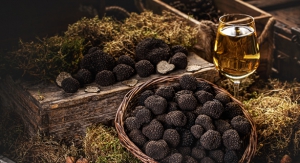Abstract
Mushroom cultivation on common reed (Phragmites australis) substrates is a new research area. The yield distribution and nutrient changes in mushroom flushes were studied using a reed to cultivate golden oyster mushrooms (Pleurotus citrinopileatus).
The results showed that cultivating mushrooms on reed substrates resulted in different flushes of mushrooms. The biological efficiencies were found to be 69.10 % for three (FF) and 75.98 % for four (MF) flushes, respectively. Significant reductions in crude protein content (from 28.28 % to 18.35 %) were observed, while total sugar content increased from 24.86 % to 36.95 % from the first to fourth flushes under MF treatment. However, no significant differences in crude protein or total sugar were observed between FF-treated flushes. Calcium concentrations increased, while heavy metal concentrations were lower than the toxicity safety standards. In the cultivational room, inhomogeneous environmental conditions led to changes in the number of flushes, as well as altered nutrient quality and overall production when using the same substrate to cultivate the same type of mushroom.
Mushrooms are widely consumed around the world as a nutrient-dense food source with numerous health benefits. Oyster mushrooms (Pleurotus spp.) are particularly popular due to their high levels of fat-soluble vitamins and essential minerals, as well as their low sodium and fat content (Abou Fayssal et al., 2021). Oyster mushrooms are widely cultivated because they can grow on a variety of substrate materials, have a relatively short cultivation period, and a low production cost (Mahari et al., 2020a). Their growing popularity is due to their ease of cultivation, high yield potential, and medicinal and nutritional value (Chang, 2006).
Please read the full article here.
Source: ScienceDirect
Truffles are expensive but they are well worth it!
The truffle is a tuberous fungus that grows underground, on the roots of various tree species such as oak, poplar, or hazelnut bushes. Truffles grow from truffle spores that are spread by insects and maggots, among other things. Furthermore, the truffle also uses the nutrients of plants and trees.
The truffle looks like an irregular tuber with a diameter of a few centimeters. Pigs and wild boars love truffles and are therefore used to search for truffles. Due to the fact that these animals have usually already eaten half the truffles and cause a lot of damage, dogs are now also trained to search for truffles.
Truffles are very expensive. This is because the truffle cannot be grown, but must be sought. It's a real delicacy and comes therefore with a price. Truffles come in many varieties and each truffle has its own season. The season of the white and black truffle runs from November to January and the summer truffle from March to October.
Truffles also have health benefits. Some varieties contain antioxidants and white truffles are also said to have anti-inflammatory properties. They are full of phosphorus, calcium and protein. They contain hardly any fat and they are naturally sugar-free.
So truffles come with a price tag, but they are well worth it. Because they are so aromatic, you only need a little bit. Truffles are often used in Italian dishes. The taste of the truffle can be described as unique!






















